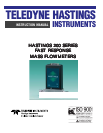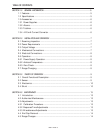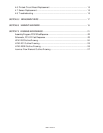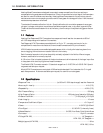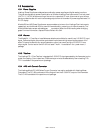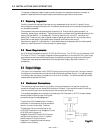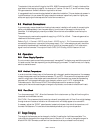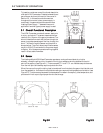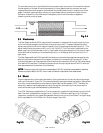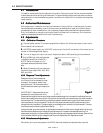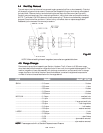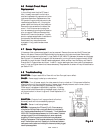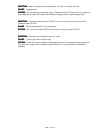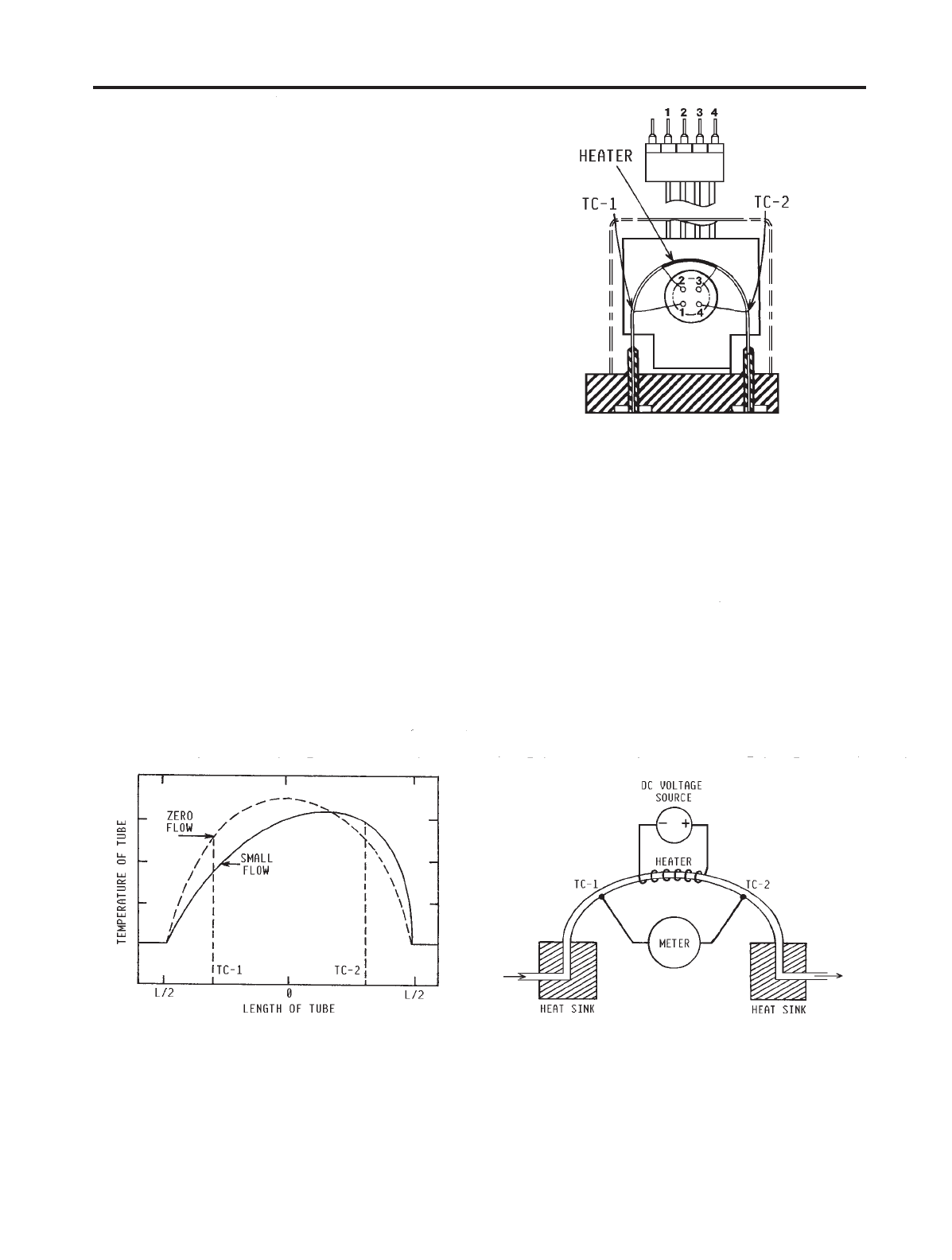
126B - PAGE 9
3.0 THEORY OF OPERATION
This section contains an overall functional description
of Model HFM Flowmeters. Detailed schematics and
parts lists can be found at the end of the manual in
Section 6.0. In this section and other sections
throughout this manual, when a power supply is
mentioned, it is assumed that the customer has a
Hastings Power Supply. These sections are not
applicable if another type of power supply is used.
3.1 Overall Functional Description3.1 Overall Functional Description
3.1 Overall Functional Description3.1 Overall Functional Description
3.1 Overall Functional Description
The HFM Flowmeter consists of a sensor, electronic
circuitry, and a shunt. The sensor measures the flow
rate from 0 to 10 sccm of the gas to be metered. The
shunt divides the flow such that the flow through the
sensor is a precise percentage of the flow through the
shunt. The flow through the sensor and the shunt is
always laminar. The circuit board amplifies the sensor
output to 5.00 VDC and sends it to the power supply
to display. All of these components working together
result in a fast, stable flowmeter.
3.2 Sensor3.2 Sensor
3.2 Sensor3.2 Sensor
3.2 Sensor
The Hastings Model HFM Mass Flowmeter operates on a unique thermal electric principle
whereby a metallic capillary tube is heated uniformly by a resistance winding attached to the mid-
point of the capillary (see Figure 3.1). Thermocouples TC-1 and TC-2 are welded at equal distances
from the mid-point and develop equal outputs at zero flow.
When flow occurs through the tubing, heat is transferred from the tube to the gas on the inlet side, and
from the gas back to the tube on the outlet side creating an asymmetrical temperature distribution (see
Figure 3.2). The thermocouples sense this decrease and increase in the capillary tube temperature, and
produce a millivolt output signal proportional to that change.
Fig.3.1Fig.3.1
Fig.3.1Fig.3.1
Fig.3.1
Fig.3.3Fig.3.3
Fig.3.3Fig.3.3
Fig.3.3
Fig.3.2Fig.3.2
Fig.3.2Fig.3.2
Fig.3.2



